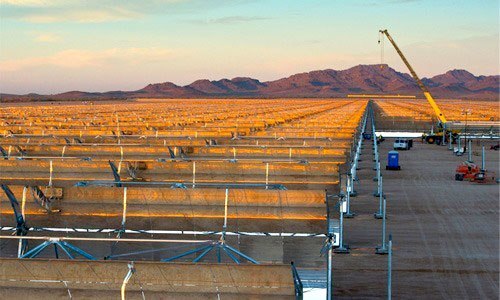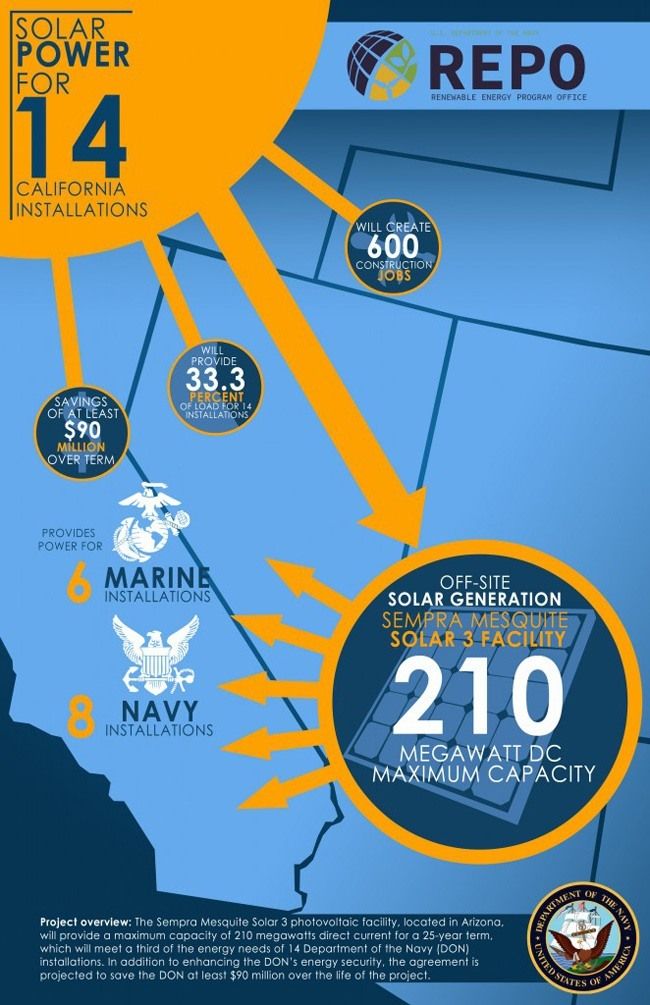

A number of other giant projects are also in the pipeline in India, as part of government plans for a dramatic expansion of the industry, although they have yet to be constructed.

Mesquite 3, which will be sited 60 miles west of Phoenix, Arizona, will provide the Navy with 210 MW of direct power. This means the installation of more than 650,000 extra solar panels, which will move to track the sun as it crosses the sky, to get the maximum value from the intense desert sunshine. The Navy says it will save $90 million in power costs over the 25-year lifetime of the contract.
Some solar power plants in India have caused controversy because they need teams of people to wash off the layer of dust and particles from air pollution to keep the panels efficient. This uses a lot of scarce water.
However, in the cleaner desert air of Arizona, this is not a problem. The Navy boasts that Mesquite 3 will require no water, so saving “this precious resource for other needs.”
The building of the plant will require 300 construction workers but it will create only 12 long-term jobs. The plant also avoids controversy because it is sited on “previously disturbed land” and so is not damaging a pristine environment. It is also near existing power plants and transmission lines, so the plant will not need additional infrastructure.
Reduced Emissions
The Navy estimates that the station will reduce greenhouse gas emissions by 190,000 tons annually—the equivalent of taking 33,000 cars off the road.
Ray Mabus, the Secretary of State for the Navy, who opened the project, has been pushing hard for renewables to be used for military power generation.
In 2009, the U.S. Department of Defense was instructed by Congress to get 25 percent of its energy from renewable resources by 2025 but Mabus accelerated that goal and directed that one gigawatt (1,000 MW) should be procured by the end of 2015.
The new contract adds to a 17 MW installation at Camp Lejeune, North Carolina and another of 42 MW at Kings Bay, Georgia. The Navy says that, in total, its renewable energy procurement will be 1.2 GW by the end of 2015, which is well ahead of target.
It will use the power for Navy and Marine Corps shore installations in California and surrounding states.
Opening the project at one of the installations, the Naval Air Station North Island, in California, Mabus said the project was “a triumph of problem solving” and would help increase the Department of the Navy’s energy security by diversifying the supply.
YOU MIGHT ALSO LIKE
One of the World’s Largest Solar Farms to Be Built in California Desert

 233k
233k  41k
41k  Subscribe
Subscribe 